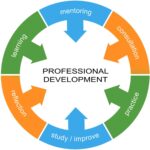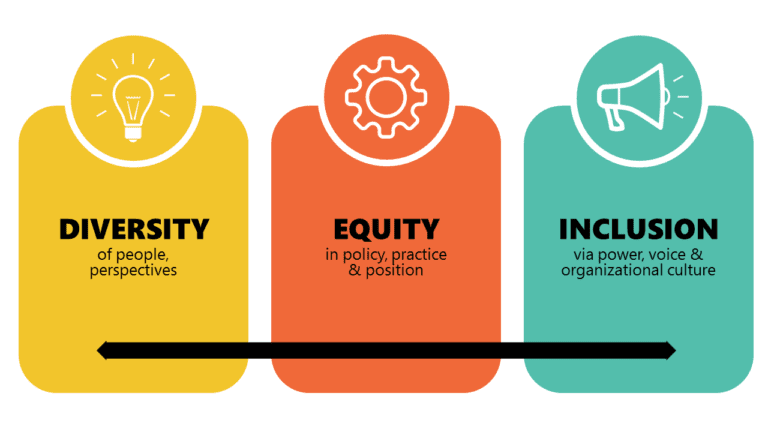Diversity and inclusion have become central topics in the discourse around education in the United States. As classrooms across the country become increasingly diverse, the role of teachers in fostering an inclusive environment is more crucial than ever. This article explores how U.S. teachers are addressing diversity and inclusion, the challenges they face, and the strategies they employ to create a welcoming and equitable learning environment for all students.
The Changing Face of the Classroom
The demographic makeup of U.S. classrooms has shifted dramatically in recent decades. Students come from a wide range of ethnic, cultural, linguistic, and socioeconomic backgrounds. Additionally, classrooms include students with diverse learning needs, including those with disabilities, English language learners (ELLs), and students from various family structures.
Teacher Insight: Teachers today are teaching in classrooms where no two students are alike. This diversity is a source of strength but also presents unique challenges in ensuring that every student feels valued and supported. Teachers must be culturally responsive and adapt their teaching strategies to meet the varied needs of their students.
The Importance of Culturally Responsive Teaching
Culturally responsive teaching is an educational approach that recognizes the importance of including students’ cultural references in all aspects of learning. This method helps to make education more relevant and accessible to students from diverse backgrounds and fosters an environment where all students feel respected and understood.
Teacher Insight: Many teachers emphasize the importance of building strong relationships with their students and understanding their cultural backgrounds. This understanding allows them to tailor their lessons in ways that resonate with students’ experiences and perspectives. For example, a history teacher might incorporate multiple perspectives on historical events to reflect the diverse backgrounds of the students in the classroom.
Addressing Implicit Bias
Implicit bias refers to the attitudes or stereotypes that affect our understanding, actions, and decisions in an unconscious manner. In the classroom, implicit biases can influence teachers’ expectations of students, potentially leading to unequal treatment or opportunities.
Teacher Insight: Teachers are increasingly aware of the need to examine their own biases and how these might impact their interactions with students. Many districts offer professional development on recognizing and mitigating implicit bias, helping teachers create more equitable learning environments. Teachers who actively engage in this work report that it not only improves their teaching practice but also builds stronger, more trusting relationships with their students.
Challenges in Promoting Inclusion
Promoting diversity and inclusion in the classroom is not without its challenges. Some of the common obstacles teachers face include:
-
Lack of Resources: Many teachers lack access to culturally relevant materials or training that could help them better serve their diverse student populations.
-
Curriculum Constraints: Standardized curricula and testing can limit the flexibility teachers have to adapt lessons to reflect diverse perspectives.
-
Resistance to Change: In some communities, there may be resistance to inclusive practices, whether due to cultural, political, or ideological reasons.
Teacher Insight: Teachers often find themselves advocating for more inclusive curricula and resources within their schools. This can be a slow and challenging process, especially when there is resistance from administration or the broader community. However, many teachers persist because they believe that all students deserve an education that reflects their identities and experiences.
Strategies for Fostering Inclusion
Despite the challenges, teachers across the U.S. are employing various strategies to promote diversity and inclusion in their classrooms:
-
Inclusive Curriculum: Teachers are finding creative ways to integrate diverse voices and perspectives into their lessons, even when the official curriculum does not. This might include incorporating literature from diverse authors, discussing current events from multiple viewpoints, or celebrating cultural heritage months.
-
Differentiated Instruction: By differentiating instruction, teachers can meet the diverse needs of their students. This might involve providing different materials, offering varied ways for students to demonstrate their learning, or creating flexible groups that allow students to work at their own pace.
-
Building a Supportive Classroom Culture: Teachers are intentionally creating classroom environments where all students feel safe and valued. This includes setting clear expectations for respect, using inclusive language, and addressing any instances of discrimination or exclusion promptly and thoughtfully.
-
Family and Community Engagement: Teachers recognize the importance of involving families and communities in the educational process. By building strong partnerships with parents and community leaders, teachers can create a more supportive and inclusive environment for their students.
Teacher Insight: Many teachers find that fostering a sense of belonging is key to student success. When students feel seen and valued for who they are, they are more likely to engage in learning and take risks in the classroom. Teachers who prioritize inclusion often see improvements not just in academic performance, but in the overall well-being and confidence of their students.
Conclusion
Diversity and inclusion are not just buzzwords in the U.S. education system; they are essential components of a successful and equitable learning environment. Teachers play a pivotal role in making sure that every student, regardless of background or ability, has the opportunity to thrive. While there are challenges to promoting diversity and inclusion, the efforts of dedicated educators across the country are making a significant difference. By continuing to adapt, learn, and advocate for inclusive practices, teachers are helping to create a more just and equitable future for all students.


